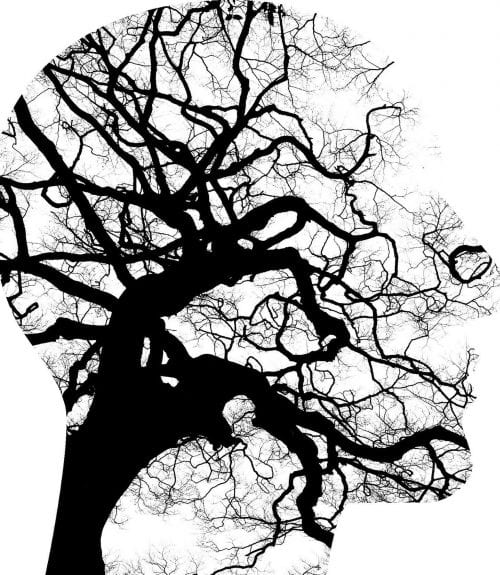Descriptive Research
 Descriptive Research is used to describe and explore behaviors, although the findings cannot definitively state cause-and-effect relationships. It is used for studying new or unexplored topics for which researchers may not yet have expectations about the outcomes. The following are various techniques of this type of research:
Descriptive Research is used to describe and explore behaviors, although the findings cannot definitively state cause-and-effect relationships. It is used for studying new or unexplored topics for which researchers may not yet have expectations about the outcomes. The following are various techniques of this type of research:
Observational Studies
Naturalistic observation involves observing participants in their natural environment through systematic observation, while laboratory observation involves observing participants in a controlled environment designed to simulate the natural environment as much as possible.
Naturalistic Observation: The “natural” environment simply means the environment in which the person can be found, including their office, home school, etc. In this type of study, researchers do not disturb the participants and try to be as unobtrusive as possible so that the behavior of the participants does not change from their normal routine – this helps ensure that the researcher’s observations are not influenced by the artificial setting that can be found in laboratory observation. This is especially important for studying situations that would be difficult to setup in a laboratory setting, particularly since participants are more likely to change their behavior when they know they are being watched.
Still, there are problems with this setup. There are a variety of unwanted variables in the environment, and considering the environment is not controlled, replication of the research is challenging. There is also the problem of observer bias in which errors are introduced into the recording of observations due to the researcher’s value system, expectations, or attitudes. Having multiple observers can help minimize this, but this is an overarching concern either way.
Laboratory Observation: The “laboratory” method is when researchers observe participants in a controlled environment, which is often best used to study how participants respond to specific variables while being able to control extraneous variables. The outcomes are more filtered in this manner, and the overall process is more efficient since more participants over a short period of time can be involved.
As with any approach, there are some limitations…and with laboratory observations, the ability to generalize from the laboratory to the real world is a significant concern. As stated above, participants tend to behave differently in these settings than they would in their natural environment. The knowledge that the results may not be representative of real-world behavior would need to be considered in the application of the research outcomes.
Case Studies
Case studies are a type of descriptive research that involves a close examination of an individual or small group. Researchers collect as much data as possible about the person or group using multiple methods, such as interviews, questionnaires, and medical records. Case studies are often used to study rare events or conditions where it is difficult to find a large number of participants. Case studies can help researchers develop theories by providing clues about the factors that contribute to a particular behavior or condition…but, case studies cannot support or refute hypotheses, and their findings cannot be generalized to a larger population. This is because case studies are limited by the small number of participants and the potential for bias.
Some famous case studies in psychology:
- Phineas Gage: Phineas Gage was a railroad foreman who experienced a severe head injury when an explosion caused an iron rod to shoot through his skull. Amazingly Gage survived but then experienced significant personality changes that was used to study brain damage in the frontal lobe.
- Genie: Genie was a young girl kept in isolation for 13 years of her life, and has been used to study the effects of early deprivation on language development, cognitive development, and social skills.
- Little Albert: Little Albert was a 9-mth old boy who was conditioned to fear a white rat by pairing it with a loud, scary noise. This study also demonstrated that fear had generalized to other similar objects. This controversial case study is an early example of classical conditioning, one of the cornerstones of learning theory.
- Henry Molaison (H.M.): H.M. was a man who had severe epileptic seizures that significantly impaired his life. In an attempt to treat his condition, he had several portions of his brain removed. The procedure did help control his seizures, but it left him with severe anterograde amnesia – the study of this played a central role in the advancement of our understanding of the hippocampus and memory formation.
Survey Method
The survey method uses questionnaires or interviews to gather data from a large number of participants, but the data itself is not as in-depth as what can be gleaned from other descriptive approaches. The responses can come from a variety of approaches including face-to-face interviews, phone calls, virtual meetings, emails, etc. Surveys can be a cost-effective and relatively quick way to collect data on a wide variety of topics. Generally speaking, if done well, the results of surveys can have solid statistical power and can be generalized back to the population.
As convenient and fruitful as surveys can be, keep in mind that how the questions are worded can lead to biased responses…this means that intentionally or not, researchers can sway the outcome if they are not very thoughtful in how questions are posed. Even the most carefully worded questions can result in skewed outcomes because participants are not always honest in their responses…this too can be intentional or unintentional. Then there is the issue of not getting enough responses at all. In the case of low response rates, the results may not be representative, meaning conclusions are not as generalizable.

Matthew A. Webster, MA, MS, ED.D, LPC
Dr. Matt Webster is a professional educator, nutritionist, and therapist located in the Houston, Texas area. He specializes in couples therapy, sexuality, and maladaptive eating patterns with a focus on the role of nutrition. More About Matt >>
Last modified:








